If I am using a pattern that has been folded, I prepare it by pressing with a medium to low temperature DRY iron. Enough heat to flatten the pattern, but not enough heat to burn it. I do not use steam or the pattern will deform. Take care if there is tape holding the pattern together and keep the iron away from the tape.
When cutting the fabric, I make it as simple and easy as possible for myself. I use weights and rotary cutters. Fabric cutting weights are fairly expensive when purchased at a sewing shop, and I use a lot of them. I use zinc coated (galvenized) washers instead of the cutting weights. I washed them after I purchased the box or two (probably in the dishwasher to my husband's dismay). The smaller weights I glued together with epoxy, which may or may not be necessary. I rarely pin the pattern to the fabric, and when I do, I place the pins along the bias of the fabric (45 degrees to the grain) to minimize fabric distortion. Note: steel washers without the zinc coating will oxidize and leave black smears on your fabric.
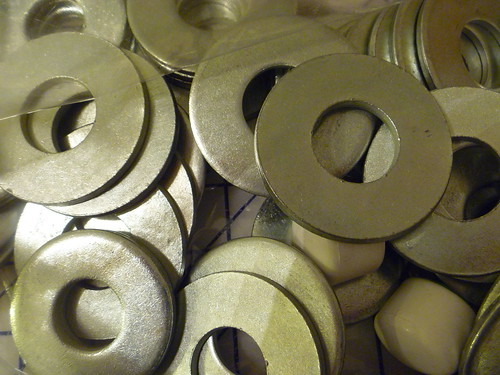
Depending on the type of fabric my prep is different. I do not iron knits. Ironing knits distorts and stretches the fabric. I iron wovens prior to cutting. If I am cutting prints, especially large prints, I may cut each piece separately so I can place the print where I want it on the pattern piece. In this case, I trace the print or part of the print on the pattern piece to match prints or place the print in an attractive location. If not trying to match prints, I will fold the fabric on the grain.
Finding true grain of fabric can be tricky. There are definitely different grades of fabric. Sometimes I think the looms may get off kilter and the fabric may not be woven square (the warp and the weft threads are not at right angles). If the weave is too out of square, there is nothing that can be done. You may not want to use that piece of fabric, or use it in a garment that is loose so that the grain may not affect it as much. Some people try to stretch the fabric and square it up, but generally, the fabric will return to its previous state and you end up with a strange fitting or hanging garment anyway.
To find the grain on a knit fabric, whether it is Jersey knit, double knit, or interlock, I will find a line of knits and trace it on the location where I will be folding it (or near the fold) to cut it out. This takes a little bit of time, but keeps T-shirts and leggings from twisting around arms, legs and torsos.
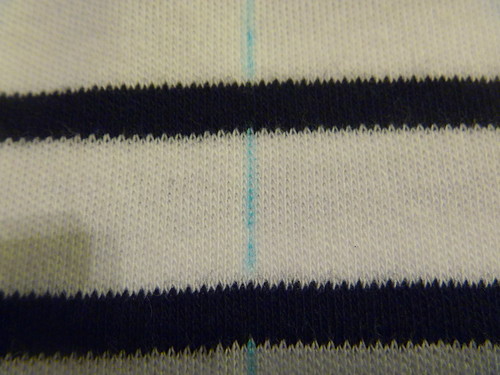
Stable woven fabrics can often be put on true grain by placing the selvages together and laying it out on a cutting grid. If there are wrinkles in the fabric, it is not on grain and you will have to slide the top layer of fabric one way or the other along the selvage until it lies flat. If it doesn't seem to be working well, on the cross grain either rip the fabric or pull a thread to line up the cross grain (weft) threads. This should help get the selvages to line up. Unstable fabrics like silk or rayon, I generally have to line up the weft threads on the end because the fabric will lie flat even when it isn't trued up. Twill fabrics are luckily stable. Usually ripping or pulling a weft threads is nearly impossible for me and the weave makes it very difficult to follow a weft thread.
This series of pictures shows wrinkles in the stable fabric that I am trying to smooth out by sliding the selvages over each other. Ultimately for this fabric, I had to rip the weft edge, line it up on the cutting grid, weight it and pull the other side until everything line up. It took a little while, but the results were well worth it. The third picture shows pulling a thread. The pulled thread marks the location to cut along the cross-grain.
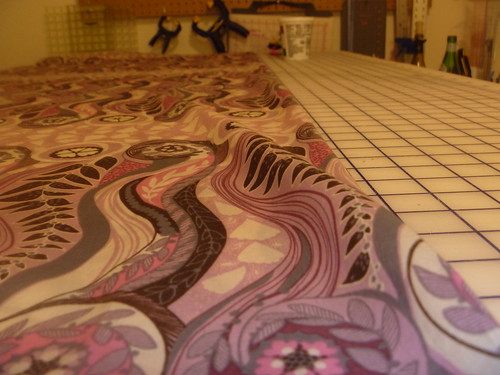


After spending the time trueing up the fabric, it is worth spending a little more time placing the pattern on the grain of the fabric. I usually start out with a weight on one corner and measure to the selvage in multiple locations along the grain line of the pattern.
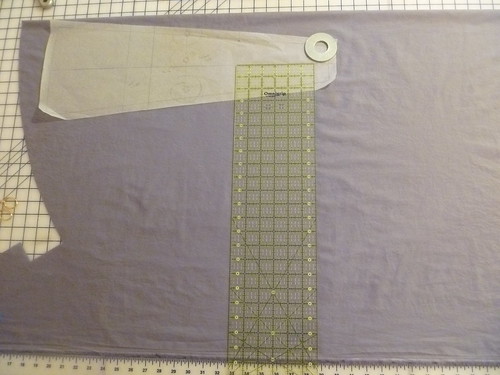
When using the rotary cutter, it helps to keep a little bit of tension on the fabric behind the rotary cuttter. Essentially, just holding the fabric down behind the cutter to keep the fabric from getting bunched up in front of the cutter or pulling on the fabric a little bit. It is easier to do this with lots of weight on the pattern and fabric.
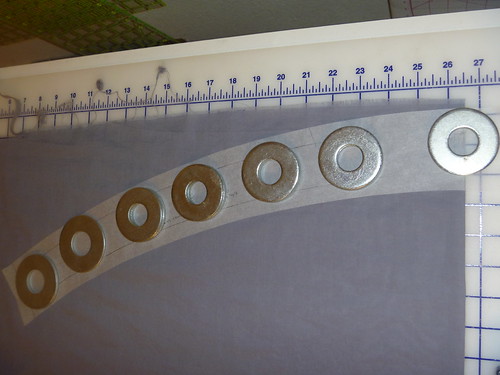
When I use the traced patterns, I find many advantages for marking the construction/seam lines to get a much more accurately sewn garment. The tic marks that I carry through the seam allowance get clipped with a 1-2 mm cut. Just enough to be able to line up the edges. A lot of patterns have notchess that are difficult to cut with a rotary cutter and require a lot of fabric adjusting to cut. I don't do that anymore and have just replaced the notch cutting with a little clip. Sometimes I also mark the location on the seam line where these tic marks are with the a water soluable fabric marker. In addition, I mark with a water soluable marker corners where seams come together. This helps make up for my inaccuracies when I cut the pattern out. Areas around the neck line, shoulder seams, and collars are highly sensitive to matching the sewing lines and small errors in these locations are usually visible. To make these marks on the seam line, prior to lifting the weights, I place pins perpendicular to the fabric through all the layers of the fabric. When I remove the weights, I mark the location where the pins go through on the fabric, usually on the right side, but as long as one side is marked the location can be found.
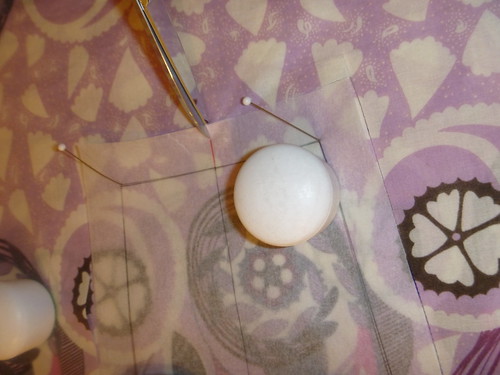
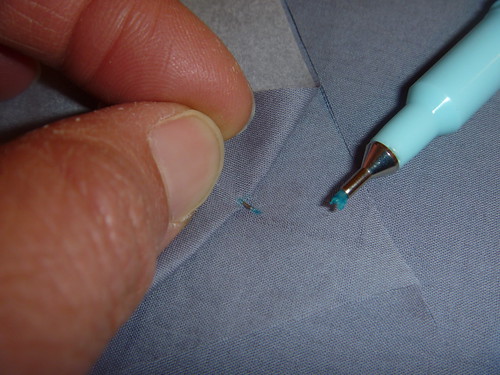
Whoa! I'm going to have to come back in reread this one slowly when I haven't drunk half a bottle of chianti. Totally useful.
ReplyDelete